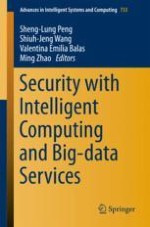In the dawning era of Intelligent Computing and Big-data Services, security issues will be an important consideration in promoting these new technologies into the future. This book presents the proceedings of the 2017 International Conference on Security with Intelligent Computing and Big-data Services, the Workshop on Information and Communication Security Science and Engineering, and the Workshop on Security in Forensics, Medical, and Computing Services and Applications. The topics addressed include: Algorithms and Security Analysis, Cryptanalysis and Detection Systems, IoT and E-commerce Applications, Privacy and Cloud Computing, Information Hiding and Secret Sharing, Network Security and Applications, Digital Forensics and Mobile Systems, Public Key Systems and Data Processing, and Blockchain Applications in Technology. The conference is intended to promote healthy exchanges between researchers and industry practitioners regarding advances in the state of art of these security issues. The proceedings not only highlight novel and interesting ideas, but will also stimulate interesting discussions and inspire new research directions.
